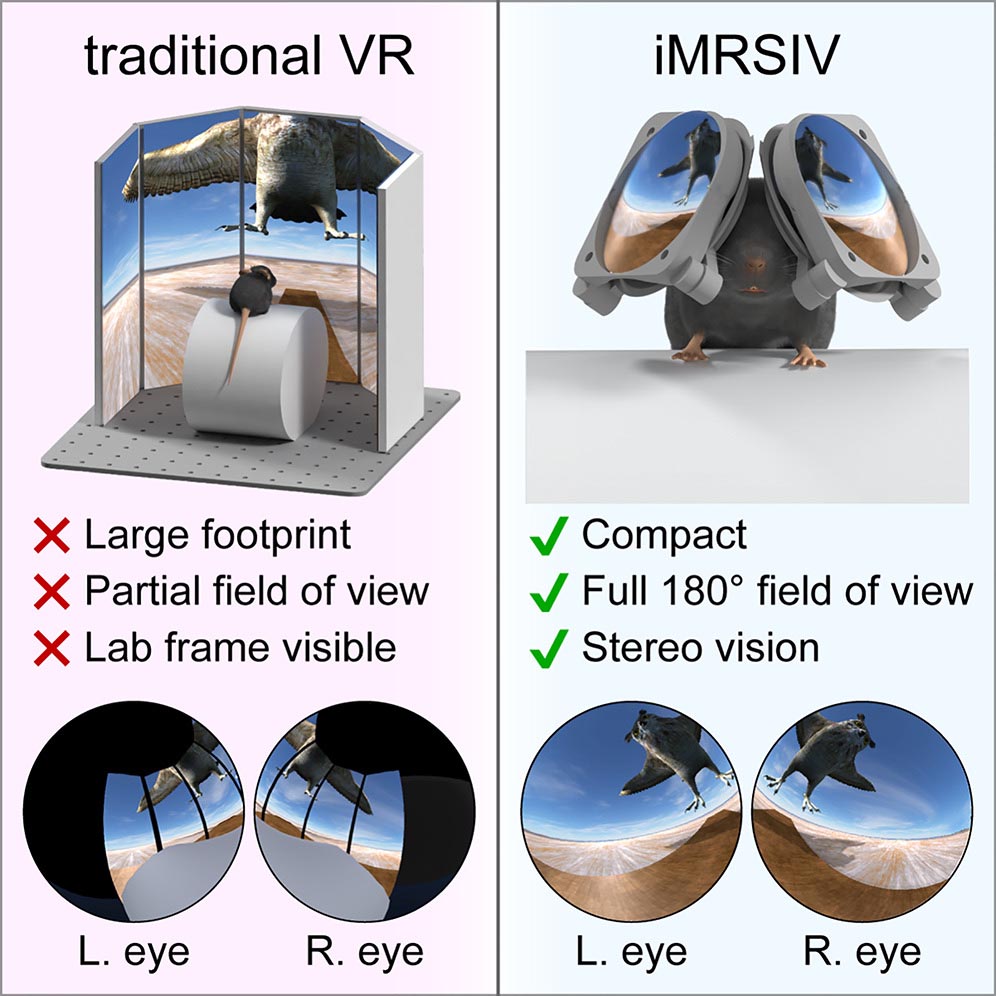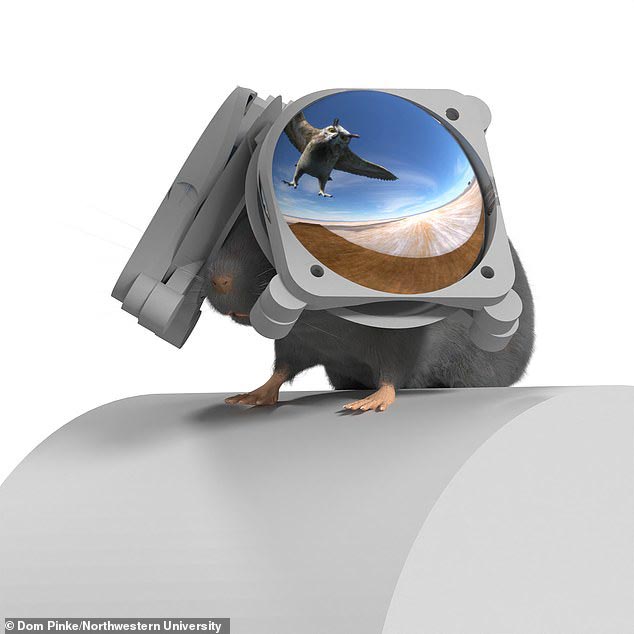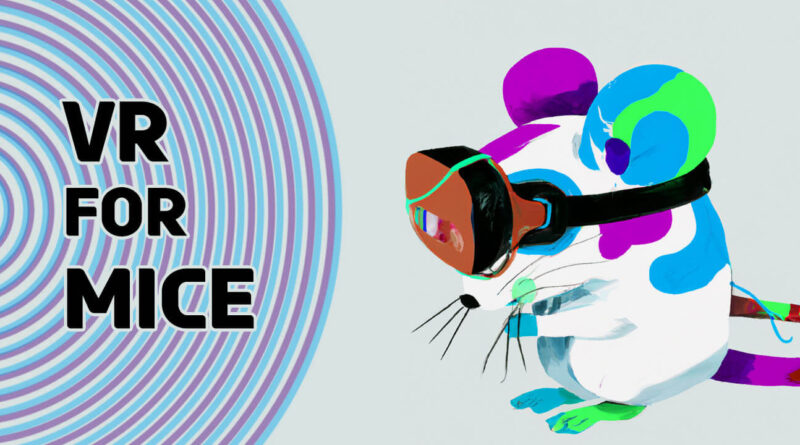VR for Mice
Mice have made enormous contributions to human evolution. Peaceful coexistence with humankind aside, science has used mice to help develop many incredibly significant innovations like the polio vaccine, monoclonal antibodies, cancer treatments, and a plethora of social, cognitive, and behavioral studies. It now seems mice can add another field of utility to their repertoire: virtual reality.
Previous attempts to engage mice with virtual environments have proven difficult and were more akin to a human watching television than a human using VR. Mice were able to perceive virtual elements in their surroundings but never to the point of immersion that would replace said surroundings. They could always see the TV stand and floor, as it were.
Miniature Rodent Stereo Illumination VR

A mouse’s field of view is 140° with each eye with an approximately 40° overlap in the center. Using a new approach to bringing VR into the mouse’s experience, the creators of iMRSIV (Miniature Rodent Stereo Illumination VR) are better able to replicate the rodent’s natural vision. Thus making it possible to achieve far more convincing VR.
We may not be seeing mice speedrunning Half-Life: Alyx or nailing every Beat Saber track anytime soon, but their achievements in VR could be nonetheless notable. A deeper understanding of how mice perceive their real and virtual environments can provide new information about how humans do the same.
Just what exactly this new tool for studying mice may bring to the study of human perception remains to be seen. What we do currently know is that a mouse wearing VR goggles is a certain kind of sci-fi cuteness!


